Are you fed up with contradicting recommendations regarding the best leg workout? You’re not alone, though. For years, many fitness enthusiasts and professionals have questioned the science underlying leg muscle training. Here, we’ll dispel popular myths regarding leg exercise and show the facts. The full-leg training regimen will put your muscles to the test like never before. So, let’s go into the world of leg training and sort out the truth from the fantasy.
People frequently question if they are performing the proper workouts, using the proper technique, or targeting the appropriate muscle areas. As a result, there is a cacophony of recommendations that may confound even the most devoted gym-goer.
Electrocuting All Four Quad Muscles
To begin, consider an unusual and contentious approach in leg training: electrocuting all four quad muscles at the same time. While it may sound alarming, this strategy is used to highlight an important principle in leg training: the capacity to choose target inner or outside quadricep muscles. Before you dismiss this as just gym mythology, let’s go further into the research behind this unconventional technique.
- For many years, conventional thinking held that it was difficult to adequately isolate and train certain portions of the quadriceps muscle group. The logic behind this idea is simple: your quad’s innermost muscle, known as the vastus medialis (sometimes known as the “teardrop”), and its outermost muscle, the vastus lateralis.
- They both emerge through the femur at almost the same point, making it appear hard to target one without damaging the other. As a result, the prevalent belief has been that you cannot choose to emphasize the inner or outer quads.
- In the search for truth, some fitness enthusiasts and specialists have done unusual experiments, such as electrocuting all four quad muscles simultaneously during leg workouts. This may appear severe, and it’s certainly not a suggested training strategy, but it serves a vital purpose: it challenges the long-held idea that you can’t target certain quad muscle groups independently.
- Quads are composed of different muscles, including the vastus medialis (teardrop) and vastus lateralis (sweep). Conventional wisdom suggests that you can’t influence their development because they connect to the femur in similar places.
Electromyography (EMG) Studies as Evidence
Electromyography (EMG) investigations have been used to establish if this unorthodox technique has any scientific worth. EMG monitors muscle activity by capturing electrical impulses generated during contraction. Research has provided important information on how the quadriceps work during various leg exercises.
External vs. Internal Rotation Muscle Engagement
Scientists have discovered data that undermines the assumption of non-selective quad training through EMG investigations. It appears that you may selectively engage and activate particular regions of your quadriceps by altering your form and managing hip and knee rotation.
- External Rotation: During a leg workout, externally rotating your hip activates the vastus medialis (teardrop) more intensively.
- Internal Hip Rotation: Internal hip rotation, on the other hand, emphasizes the vastus lateralis.
These findings imply that by actively altering your form, you may change the recruitment patterns of your quad muscles. So empirical data has challenged the notion that you can’t choose to target the inner or outer quads.
Hypertrophy Distinctions: Partial vs. Full Range of Motion
- Furthermore, the science of leg exercise gets into the complexities of hypertrophy, or muscular growth. According to research, various parts of the quadriceps may be more active during different periods of movement. For example, during the middle section of a workout, the vastus lateralis may be more involved, but the vastus medialis may be more engaged during the lockout period.
- This discovery shows that, in addition to targeting specific quad muscles, changing the range of motion and exercise style can result in varied patterns of muscle activation. It also emphasizes the significance of variation in your leg training regimen for complete muscular growth.
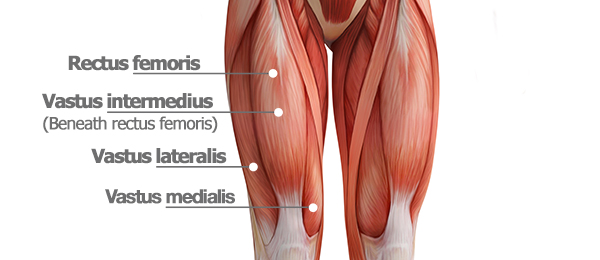
Putting Theory into Action: Adapting Your Leg Workout
How can you use what we’ve learned about the science of selective quad targeting and muscle activation in your leg work out? Here are some practical ideas:
- Choose activities that induce external hip rotation to improve your teardrop (vastus medialis). Hack squats, for example, with your feet close together and toes pointed outward, can aid with this.
- Choose exercises that include internal hip rotation to emphasize your quad sweep (vastus lateralis). Hack squats with your feet close together and your toes pointing outward at a 45-degree angle might assist you in engaging the sweep more efficiently.
- Experiment with varied ranges of motion during your leg workouts to target different parts of your quadriceps. Including half reps, drop sets, or varied angles can help to stimulate muscle growth in a variety of ways.
- By adjusting your form during leg exercises, you can emphasize one quad muscle over the other. For instance, external hip rotation can engage the vastus medialis, while internal rotation targets the vastus lateralis. This selective muscle engagement has been proven through electromyography (EMG) studies. So, you can indeed target specific areas of your quads for better growth and definition.
- When it comes to hypertrophy, science indicates that full and partial range of motion can lead to different muscle activation patterns.
Teardrop Development with Hack Squats
One of the key aims of leg training is to build well-rounded and characterized quads. The quadriceps are made up of four separate muscles, one of which is the vastus medialis, sometimes known as the teardrop owing to its form. Hack squats may be a beneficial addition to your leg training regimen if you want to improve the development of your teardrop. Because of their form and foot placement possibilities, hack squats have a distinct benefit for emphasizing the teardrop.
Follow these criteria to effectively aim the teardrop:
- Feet Close Together: On the hack squat platform, place your feet close together. The emphasis in this narrower stance is on the inner quad muscles, notably the vastus medialis.
- Toes Pointed Outward: Point your toes outward slightly. This form modification encourages external hip rotation, which stimulates the teardrop muscle even more.
- Promoting Vastus Medialis: Performing hack squats with these modifications promotes the vastus medialis to bear the strain, promoting its growth. Remember, however, that attaining balanced quad growth is critical for overall leg aesthetics and functioning. Alternate your leg routine to include activities that emphasize both the teardrop and the sweep (vastus lateralis).
- Hypertrophy and Hamstrings: While the quadriceps receive a lot of attention in leg training, it’s important not to overlook the hamstrings. Hamstrings are important for leg strength, knee stability, and overall lower body attractiveness. Unfortunately, in training talks, hamstrings are typically disregarded. Consider the importance of foot positioning during leg curls to efficiently target and expand your hamstrings.
- Leg Curls with Dorsiflexion: Foot positioning during leg curls is an important part of hamstring training. Dorsiflexion, or flexing your toes towards your shins during leg curls, is a form modification that can have a substantial influence on hamstring activation. This modification efficiently separates the hamstrings and provides more force, resulting in higher development.
- Leg Curl Exercise Variation: Include a range of leg curl exercises in your leg training regimen to maximize hamstring growth. Whether you prefer standing or laying leg curls, use a variety of equipment and positions to challenge your hamstrings.
- Hip Hinge vs. Knee Flexion Movements: A prominent issue in leg training debates is the disagreement between hip hinge movements (e.g., stiff-leg deadlifts) and knee flexion exercises (e.g., leg curls). Each exercise addresses a different element of the hamstrings, and recognizing their advantages can assist you in designing a well-rounded leg routine.
- Stiff-Leg Deadlifts (Hip Hinge): Hip hinge motions that primarily strengthen the hamstrings and glutes. They need hip flexion while maintaining the knees reasonably straight. This exercise stimulates the hamstrings while also strengthening and developing the posterior chain.
- Knee Flexion (Leg Curls): Leg curls, on the other hand, are knee flexion exercises that target the hamstrings directly. Bending the knees to contract the hamstrings is the goal of these exercises. They offer a targeted approach to hamstring.
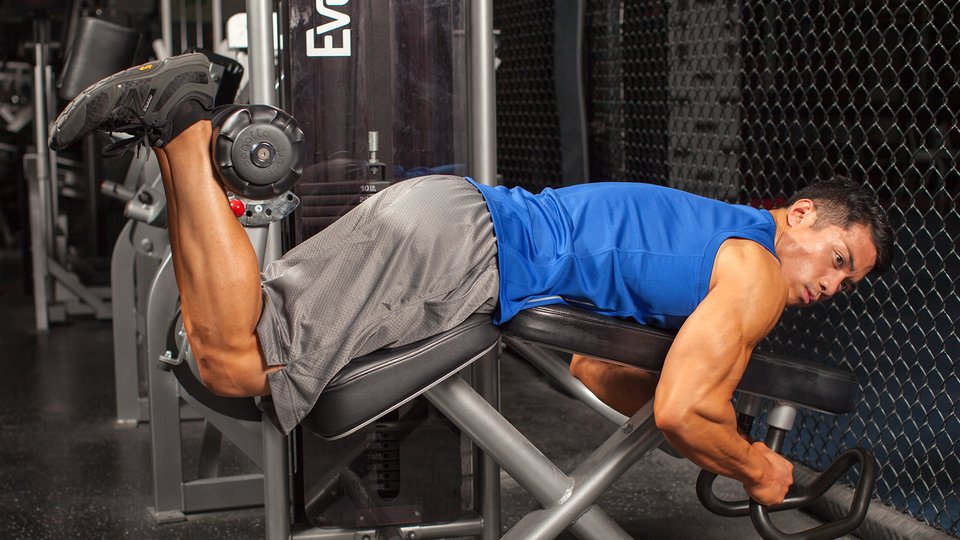
- Hamstring Development: Incorporating both hip hinge and knee flexion motions into your leg training regimen can result in whole hamstring development. Leg curls isolate the hamstrings with knee flexion, whereas stiff-leg deadlifts emphasize the hip hinge. Alternating between these exercises ensures a balanced approach to hamstring training.
- The Glute Science: Glute training has received a lot of attention in recent years, mainly from people like Brett Contreras, sometimes known as the “Glute Guy.” Gaining strong and shapely glutes is a popular fitness goal, and knowing the physics behind good glute training is critical.
- Exaggerate the Stretch: Exaggerate the stretch in your glutes during glute-focused activities like squats and lunges. This entails leaning forward slightly or moving through a wider range of motion. The idea is to more effectively activate the glutes during both the eccentric (lengthening) and concentric (shortening) stages of the exercise.
- Focus on hip dominance: You can so this in exercises such as sumo squats. This includes emphasizing hip mobility rather than merely knee flexion. Leaning forward and thrusting through your hips efficiently engages your glutes, encouraging development and power.
- Glute training: This is important for more than just appearance; strong glutes contribute to total lower body strength, stability, and injury avoidance.
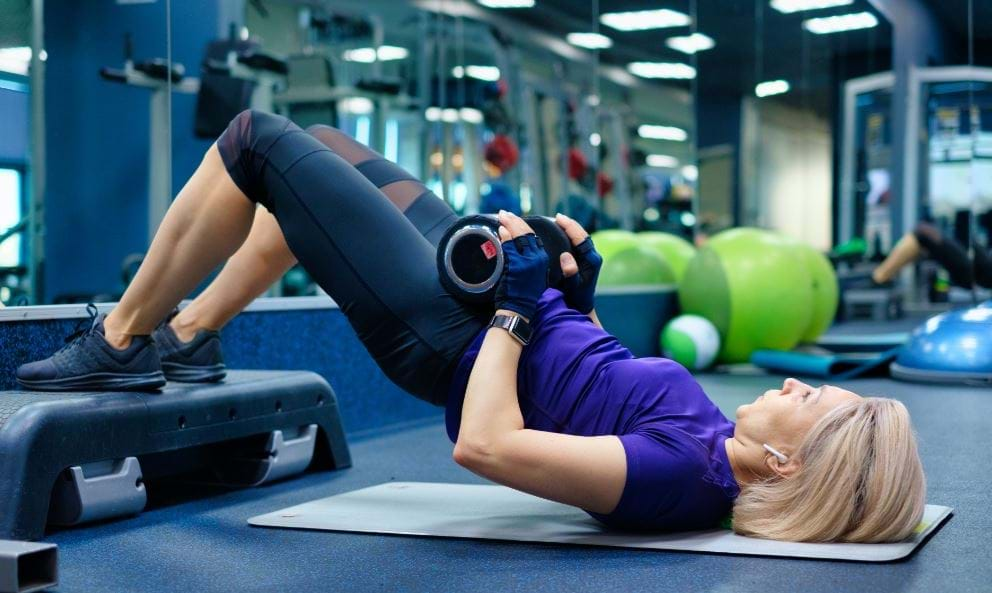
Calves and Foot Positioning
Calf muscles, notably the gastrocnemius, are notoriously difficult to exercise successfully. Recent research has shed light on the importance of foot positioning during calf workouts, as well as its effect on muscle activation and development.
- Pointing Your Foot Forward: During calf workouts, pointing your foot forward may result in proportionate improvement across both heads of the gastrocnemius muscle. This neutral foot stance promotes calf growth in a balanced manner.
- Foot Direction: Alternatively, pointing your foot outward or inward during calf activities might cause selective development in one head of the gastrocnemius over the other. This allows you to tailor your calf workout to your unique goals and desired aesthetic result.
- Calves may be a difficult muscle area to build, but knowing the physics behind foot placement will help you adapt your calf exercises for the best results. Include a variety of foot postures to maintain healthy calf growth.
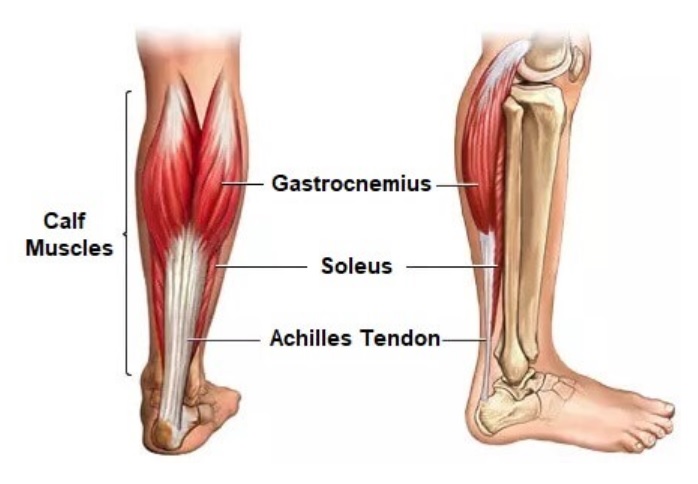
The Ultimate Leg Workout
Now that we’ve debunked leg training myths and explored the science behind effective leg workouts, here’s a comprehensive leg workout routine:
Quads:
- The best leg exercise is quads.
- The muscles on the front of your thigh are the quadriceps, sometimes known as quads. We’ll add split squats with the working leg in the center and leg presses with your feet together to your leg training regimen to maximize quad growth.
Leg Extension with Closed Feet:
- Starting Position: Place your back flat on the pad of the leg press machine.
- Execution: Stand on the press platform with your feet closely together and your toes pointing outward.
- Science Supporting It: This position encourages the development of the vastus medialis, often known as the teardrop muscle.
Squats with a centered leg in a split:
- Standing in the starting position involves putting one foot forward and the other foot back.
- Execution: To avoid any broad stances, the working leg should be centered.
- The science behind it: Centering the working leg during split squats activates and promotes the development of the vastus medialis.
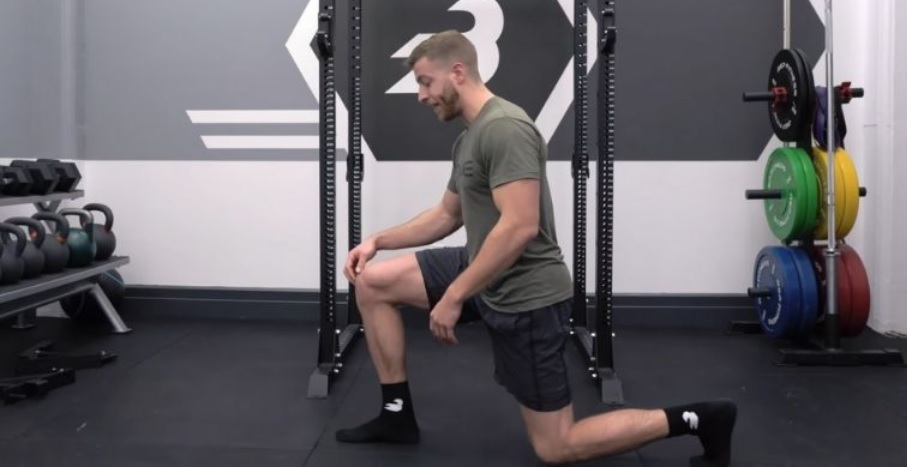
Hamstrings:
Your hamstrings, which are found on the back of your thighs, are essential for strong, stable legs. We’ll concentrate on stiff-leg deadlifts and leg curls, emphasizing dorsiflexion during curls, to properly target the hamstrings.
Deadlifts with Stiff Legs:
- Starting Position: Hold a barbell or dumbbell in front of your thighs while standing with your feet hip-width apart.
- Execution: Lower the weights towards the ground while bending at the hips and maintaining your knees fairly straight.
- The science behind it: Stiff-leg deadlifts are hip-hinging exercises that target the glutes and hamstrings.
Dorsiflexion leg curls:
- Starting Position: Place your feet firmly under the pad of a leg curl machine.
- During the leg curl, focus on dorsiflexion by flexing your toes in the direction of your shins.
- Science Supporting It: Dorsiflexion isolates the hamstrings and increases force and development in those muscles.
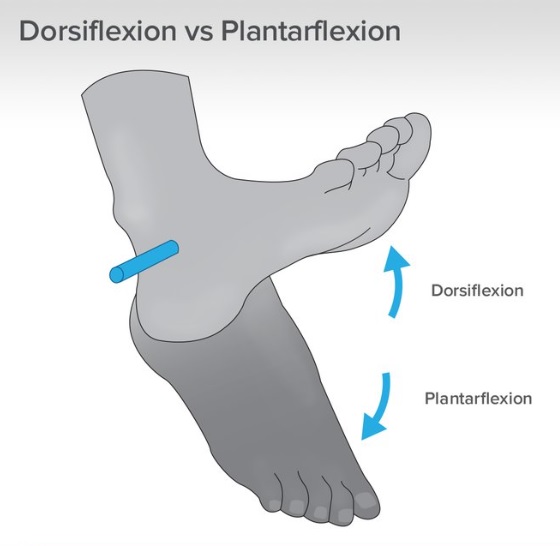
Glutes:
- Your physique will be improved by having glutes that are strong and defined. They also significantly contribute to lower body strength. We’ll concentrate on sumo squats with hip dominance and step-ups with a strong stretch to maximize glute activation.
- Dominant hip sumo squats:
- Step outward with your toes while standing with your feet wider than shoulder-width apart.
- Execution: To effectively engage the glutes, perform squats with a focus on hip dominance while leaning slightly forward.
- Science Supporting It: Squats are hip-dominant motions that emphasize glute activation.
Exaggerated stretch step-ups:
- Start by placing one foot on the bench or platform in front of you.
- Execution: Exaggerate the stretch by stepping up and leaning slightly forward.
- Science Supporting It: During step-ups, the excessive stretch makes the glutes more active.
Calves
Because of the peculiar architecture of the calf muscle, calf training can be difficult. According to recent research, foot positioning is important for proper calf growth. We’ll switch up foot positioning to work on the medial and lateral heads of the gastrocnemius.
Calf raises using the front foot position:
- Starting Position: Place your feet forward while standing on a calf raise machine.
- Calf lifts should be executed while keeping your feet neutral.
- Science Supporting It: The gastrocnemius heads on both feet have a proportionate improvement when the foot is placed forward.
Calf raises with inward and outward foot placement:
- Starting Position: Use the calf raise machine as usual, but this time try placing your feet inward and outward.
- Point your toes outward for one set and inside for the other.
- Science Supporting It: You may adjust your calf training to meet your unique goals by changing where you position your feet.
Frequently Asked Questions (FAQs):
How can I work my hamstrings properly to build my legs more?
Exercises like deadlifts, Romanian deadlifts, and leg curls can help you develop powerful hamstrings. The best hamstring growth comes from gradual loading and good technique.
What research supports glute activation during leg exercises?
Leg exercises need the engagement of the glutes. The glutes are worked because they are involved in hip extension during exercises like squats and lunges. Putting your attention on the mind-muscle link might enhance glute activation.
How can hack squats help with leg exercises?
They can aid in increasing muscular mass and leg strength. For optimum results, be sure to keep perfect technique while increasing the weight gradually.
How can I successfully build and strengthen my quads?
Include exercises like squats, leg presses, and lunges in your program to enhance your quads. To encourage muscular growth and strength improvements, utilize good technique and gradually increase the resistance.









